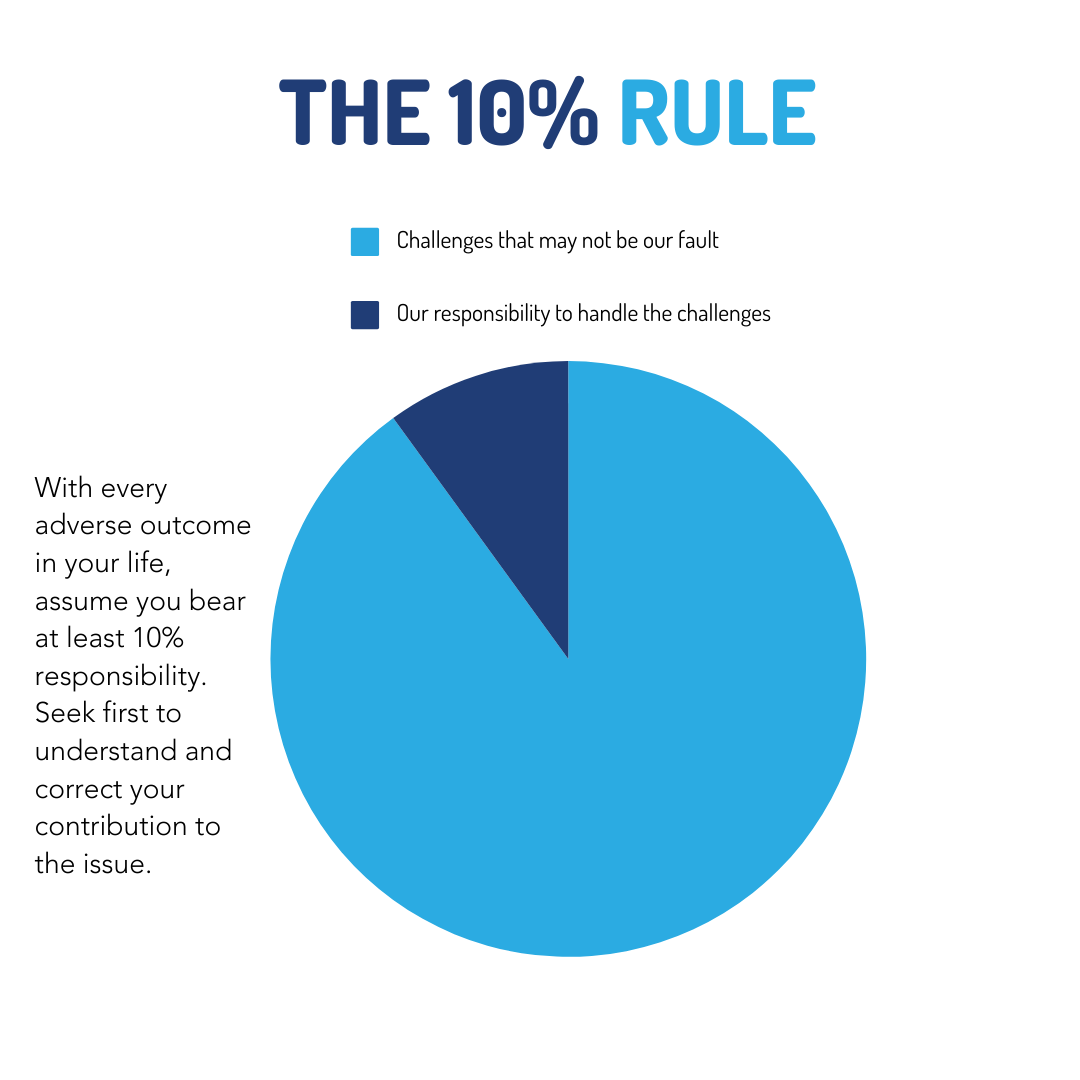By Tim Matson – March 2024
“Biden, Republicans trade blame for border crisis”
“49ers lose because of Kyle Shanahan”
“Building materials blamed for apartment disaster”

This is what I was reading in every headline or story as I was catching up on the news the other day. People are consistently shifting responsibility onto others. And while it wasn’t surprising to find this common theme of blame in every article, it still caught me off guard.
My informal analysis of the news revealed a recurring pattern: in most articles, there was a tendency to assign blame.
- Athletes blamed coaches
- Coaches blamed referees
- Individuals blamed their neighbors
- Governments blamed other countries
- Politicians blamed everyone
The list went on. This was an eye-opening exercise, and I highly recommend conducting your own analysis to see for yourself.
Owning My Role in Failure
Seeing blame thrown around so much in the news led me to a moment of introspection – where are other places I’ve seen this happen? It’s not just happening in the world – it happens right where we live and work, too. Think about it for a moment. How many times have you seen blame going around at your job? Or even at home? I bet a few examples popped right into your head. And, if we’re being totally honest, we’ve probably all played the blame game ourselves at some point.
This hit home for me when I looked back at my own time as a leader in an organization. We failed to deliver a key objective, and I was preparing to review our results. Specifically, we had missed the launch window for a key innovation item. I dedicated a section of the review to causes of the failure. The list was long, detailed, and packed with facts. It listed various issues like last-minute changes to the product design, raw material supply problems, and forecasting errors. What it didn’t list, were my own missteps in the situation. I had pointed the finger at everyone but myself, avoiding any personal responsibility. However, an honest assessment revealed that both my team and I had made several mistakes that contributed to the problem.
Reflecting on this, it’s clear that our instinct to blame or rationalize is a defense mechanism. It’s easier to not hold ourselves accountable and to believe that everything we do is right. If something goes well, we want to take ownership of everything, but if it doesn’t go the way we planned, then it is safer to place blame elsewhere.
Fault vs. Responsibility: The Distinction We Overlook
This tendency brings us to an important distinction that is often overlooked: the difference between fault and responsibility. We often assume the taking of responsibility as admitting fault of the situation, yet they are not the same. Life throws us challenges that are not our always our fault, but how we handle these challenges is entirely our responsibility. Consider when a difficult situation at work lands in our laps; while we may not be to blame for its onset, it is our responsibility as leaders to guide our teams effectively through it.
Understanding this difference is crucial because when we ignore responsibility and assign blame to others, it may lead to further anger and frustration. This can push us into a negative cycle. By not taking responsibility, we are left powerless and are unable to grow as an individual and we may continue to experience life in the role of a victim.
So, facing this truth, how does one break the habit of blaming and start embracing responsibility? There’s a strategy that might help; it’s known as the 10% Rule, and it’s a simple yet effective way to shift our mindset.

The 10% Rule is straightforward yet profound. It’s about acknowledging that in any adverse situation, no matter the circumstances, we take at least some ownership of it – let’s say about 10%. This isn’t about self-blame; it’s about recognizing that we have agency and influence over our lives and the outcomes we experience.
Putting the Rule into Action
Here’s how you can put this rule into action: Whenever you’re faced with a setback or conflict, pause, and consider the role you may have played in it. Even if it seems like the situation was completely out of your control, ask yourself:
- What could my 10% consist of?
- What was my contribution to the situation?
- What could I have done differently?
It could be an action you took, a word you said, or even a decision you didn’t make.
If I return to my story of the innovation launch miss, and applied the 10% Rule, I would have accepted some level of responsibility. For instance, considering the raw material supply issues, we could have examined our order lead times or questioned the shipment methods we chose for delivery. The key questions are: What was my contribution to the situation? What could I have done differently?
By focusing on your share of the responsibility, you empower yourself to make changes. Instead of feeling helpless or resentful, you begin to see opportunities for learning and growth. You can’t always control what others do or what life throws your way, but you can control how you respond. Taking charge of your 10% means actively looking for ways to improve, respond differently, and possibly prevent the same issues from recurring.
This approach shifts the focus from blame to empowerment. When you look for your part in a problem, you’re not just waiting for others to change; you’re taking steps to change the situation yourself. It’s a commitment to personal growth and to being a proactive rather than a reactive participant in your life.
Remember, the “10% Rule” isn’t about exact math – it’s a mindset. Even if your actual share of responsibility in a situation is more or less than 10%, the rule is a reminder that there’s always something within your power to improve.
In my own journey, and in the conversations, I have every day, I see the power of this rule in action. It’s one of the many insights we explore in our PEAK Performance Seminar which is all about equipping you with the tools to effectively navigate both personal and professional challenges.
If this resonates with you check out this link to learn more.
